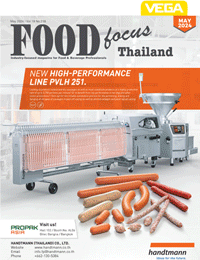เทคนิคการตรวจสอบสัตว์ต้องห้ามแบบรวดเร็วในผลิตภัณฑ์อาหารฮาลาล Rapid Detection Method for Non-Halal Animals in Halal Food Products
1326 Views |

เทคนิคการตรวจสอบสัตว์ต้องห้ามแบบรวดเร็วในผลิตภัณฑ์อาหารฮาลาล
Rapid Detection Method for Non-Halal Animals in Halal Food Products
By: ดร. อาณัฐ เด่นยิ่งโยชน์
Anat Denyingyhot, Ph.D.
Assistant Director
The Halal Science Center
Chulalongkorn University
arnat.d@chula.ac.th
เทคนิค Multiplex PCR ร่วมกับ DNA Strip เป็นนวัตกรรมในการตรวจสอบผลิตภัณฑ์ฮาลาลที่มีความทันสมัย รวดเร็ว ประหยัดค่าใช้จ่าย และสามารถตรวจสอบสัตว์ต้องห้ามได้หลายชนิดในครั้งเดียว ซึ่งเป็นการต่อยอดจากเทคนิค Multiplex HRMA ที่ตรวจวิเคราะห์สัตว์ต้องห้ามพร้อมกันหลายชนิดในการตรวจเพียงครั้งเดียว ซึ่งนวัตกรรมที่พัฒนาขึ้นนี้สามารถตรวจสอบสัตว์ต้องห้ามที่มีโอกาสปนเปื้อนในอาหารฮาลาลได้พร้อมกัน 5 ชนิด อันได้แก่ สุกร สุนัข หนูนา แมว และลิง
หลักการทำงานของเทคนิค multiplex PCR ร่วมกับ DNA strip
Multiplex PCR เป็นวิธีการเพิ่มจำนวนดีเอ็นเอเป้าหมายหลายกลุ่มในหลอดปฏิกิริยาเดียวกัน โดยมีองค์ประกอบหลัก คือ ดีเอ็นเอแม่แบบของสัตว์เป้าหมายแต่ละชนิด และไพรเมอร์ (Primer) ที่จำเพาะเจาะจงกับสัตว์ต้องห้ามนั้นๆ ซึ่งไพรเมอร์จะถูกดัดแปลงด้วยการติด Tag sequence ในตำแหน่ง 5’ ของสาย Forward primer และติดไบโอติน (Biotin) ในตำแหน่ง 5’ ของสาย Reverse primer ดังแสดงในภาพที่ 1 ซึ่งจะเห็นได้ว่าปฏิกิริยาในการเพิ่มจำนวนดีเอ็นเอ (Amplification) จะมีทั้งหมด 6 เป้าหมาย คือ ลิง สุนัข หนูนา สุกร แมว และตัวแปรควบคุมเชิงบวก (Positive control)
ภาพที่ 1 หลักการทำงานของเทคนิค Multiplex PCR ร่วมกับ DNA strip
Figure 1 Illustrates the concept of Multiplex PCR technique combined with DNA strip
หลังจากทำปฏิกิริยา Amplification แล้ว ดีเอ็นเอจะถูกเพิ่มจำนวนเป็น 2n ตัว โดยที่ n คือ จำนวนรอบของ Cycle amplicon และจะได้ PCR product ที่ถูกติดด้วย Tag และไบโอตินที่จำเพาะของแต่ละชนิด จากนั้นจะเข้าสู่ขั้นตอนการย้อมสี โดยเติมสารละลาย Anti-biotin gold conjugate และ Hybridization buffer ใน PCR product เมื่อจุ่มแผ่นทดสอบดีเอ็นเอที่ถูกตรึงด้วย Probe หรือ Anti-tag 6 แถบหรือ 6 สปีชีส์ที่เป็นคู่สมกับ Tag ลงไป สารละลายจะไหลผ่าน Tag แล้วเกิดการแยกเพื่อไปจับกับ Anti-tag ที่เข้าคู่กัน จากนั้นสารละลายที่เหลือก็จะไหลผ่าน Tag และ Anti-tag ของตัวแปรควบคุมเชิงบวกจนเกิดแถบสีแดงขึ้นเช่นกัน เพื่อเป็นการยืนยันว่าการทำ PCR ครั้งนั้นไม่เกิดข้อผิดพลาด ทั้งนี้ จะสามารถเห็นผลลัพธ์หลังการทดสอบได้ด้วยตาเปล่า ในเวลา 15 นาทีหลังจากการจุ่มแผ่นทดสอบลงใน PCR product และจะใช้เวลารวมทั้งหมดไม่เกิน 90 นาที โดยเทคนิคดังกล่าวได้รับการยืนยันประสิทธิภาพ (Validation) เมื่อเทียบกับเทคนิคมาตรฐาน Real-time PCR ซึ่งให้ผลที่สอดคล้องกัน
Multiplex PCR technique combined with DNA Strip technology has been initiated. This modern, rapid, cost-effective method enables the inspection of Halal products, capable of detecting various non-Halal animals simultaneously. This technology represents an advancement from the Multiplex HRMA technique, allowing for simultaneously analysis of multiple non-Halal animals in a single test. This developed technology enables the simultaneously detection of potentially contaminating non-Halal animals in Halal food, including pigs, dogs, rats, cats, and monkeys.
The Principle of Multiplex PCR Technique Combined with DNA Strip
Multiplex PCR is a method used to amplify multiple target DNA groups in the same reaction tube. Its primary components include the template DNA of each target animal and primers specific to each prohibited animal. These primers are modified with Tag sequence at the 5' position of the forward primer and biotin at the 5' position of the reverse primer, as shown in Figure 1. It can be seen that there are a total of six amplification targets, namely monkeys, dogs, rats, pigs, cats, and positive control variants.
After the amplification reaction, the DNA is amplified to 2n copies, where n is the number of cycle amplicons, resulting in PCR products tagged with tag and biotin specific to each species. Then, it proceeds to the color development step by adding anti-biotin gold conjugate solution and hybridization buffer to the PCR product. When the DNA strip, which is coated with probes or anti-tag 6 strips complementary to the tag, is immersed, the solution flows through the tag and separates to bind with the anti-tag pairs. Subsequently, the remaining solution flows through the tag and anti-tag of the positive control until a red band appears, confirming that the PCR process was error-free during testing. The test results can be observed with the naked eye within 15 minutes after immersing the test strip in the PCR product, and the entire process takes no longer than 90 minutes. This technique has been validated against the standard real-time PCR method, showing consistent results and demonstrating specificity for target animals.






